
Find your perfect adventure in the Peruvian Amazon, with its different views and experiences, Puerto Maldonado/Cusco and Iquitos, Manu National Park or Iquitos, each offer a unique approach to the magnificent Amazon rainforest. Iquitos stands out for its fascinating river tours and encounters with aquatic fauna, while Puerto Maldonado/Cusco is known for its beautiful walks through the jungle and its great variety of bird species. No matter where you go, whether Manu National Park or Iquitos, engage in the experience, embark on a quest for knowledge and create lifelong memories amidst the astonishing splendor of the Amazon rainforest.
If you are planning a trip to the Peruvian Amazon, it should be one of the fixed places to visit in Peru. Considering it as one of the most diverse areas on the planet, it represents more than 50% of the entire country’s territory. True, the jungle is most often associated with Peru’s giant neighbor, “Brazil”, which is home to more than half of the territory of the Amazon River basin.
However, many people don’t know that Peru’s portion of the rainforest is actually considered one of the most pristine forests in the Amazon, with many protected areas hosting high proportions of endangered wildlife. That is why Peru is probably the best country in South America to see the jungle in all its splendor.
In Peru, whose landscape is dominated by the Andes mountain range, there are two distinct regions of the jungle: the upper jungle or upper jungle and the lower jungle. The high jungle, which is also known as the jungle eyebrow, is the part of the Amazon that is located in the eastern reaches of the Andes mountain range. The combination of altitude, heavy rains and thick forests create a dreamlike environment of waterfalls, cloud forests and unique endemic fauna, due to the isolation created by the region’s abrupt orography.
The lowland jungle is the portion of the Amazon basin of Peru, which covers all jungle areas below 1,000 meters above sea level. This is the area that people usually picture when they think of the Amazon: High temperatures, frequent rains and all the animals usually associated with the jungle such as sloths, caimans, tapirs, anacondas, jaguars and more.
Learn more about the unique features of the two regions, their different ecosystems, and ways to explore the stunning beauty of the world’s largest rainforest. The Manu National Park is completely isolated. However, Iquitos is more luxurious and attracts creatures not found in other national parks.
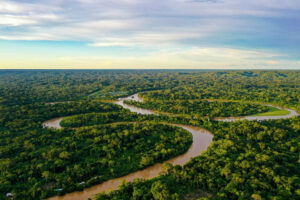
Do you want to enjoy the warm, humid air that surrounds you like a hug? Listen to the song of frogs and insects at night or wake up to an orchestra of a hundred different bird songs? In Manu National Park, you can sit and enjoy the breeze during a boat ride on the river, try fresh fruits, explore the rainforest during the day and night and many varieties of flora and fauna. The Manu National Park is a magnificent destination for you.
The Manu National Park is a World Cultural Heritage Site and an area with one of the most extraordinary biodiversity on the planet. The Manu National Park is located in the department of Cusco and Madre de Dios, including the entire Manu River basin. This is the only park in Latin America that covers a wide range of environments, from low-lying rainforest to high, cold grasslands above 4,000 m. or 13,123 feet above sea level. The Manu National Park was established on May 29, 1973 and covers an area of 1,716,295.22 hectares.
The entrance to Manu National Park is about 10 hours from Cusco by bus, including stops along the way. Once you reach the lowlands, you will have to take a boat to your destination, depending on where you are going.
One of the main attractions of the Manu National Park are the clay licks, a natural feeding place for macaws. Manu also has one of the most recognized research centers in the Amazon: the Cocha Cashu biological station. A large part of the park is indigenous territory, which includes 30 Quechua-speaking communities and many Amazonian tribes, including the Matsiguenka, Amahuaca, Yine, Amarakaeri, Huashipaire and Nahua.
Manu is one of the prominent places where ecotourism is practiced in Peru. Ecotourism is a form of tourism that preserves nature and provides sustainable development to communities of natural habitats. The park contains 221 species of mammals, including the otorongo (jaguar), black panther, tapir, collared peccary, deer, capybara, spider monkey, etc. As for birds, the harpy eagle, the jabiru, the roseate spoonbill, the jungle goose and the national bird, the cock-of-the-rock, stand out.
Traveling through Manu National Park can be challenging due to the lack of nearby airports and tourism infrastructure. However, it does mean that you will have the most authentic wildlife experience in Peru when you visit. You cannot travel directly to Manu National Park. Instead, you must first travel to the town of Paucartambo and then to the Amazon jungle.
The lodges in Manu National Park are simple and minimalist, due to the difficulty of getting the necessary supplies inside. However, they provide the opportunity to connect with nature.

The low areas enjoy an average temperature of 35º C or 95º F during the day and 25º C or 77º F at night. However, the temperature can drop during the year due to prolonged periods of heavy rain. During this time, the maximum temperature during the day is 18º C or 64º F, and the minimum temperature is 10º C or 50º F at night. The rainy season runs from January to March, but there is a chance of rain throughout the year. Therefore, the best time to visit Manu National Park is from April to December.
Manu Biodiversity Registry:
– 1025 species of birds.
– 221 species of mammals.
– 1307 species of butterflies.
– 8 species of wild cats.
– 15 species of primates.
– 27 species of macaws.
– 132 species of reptiles.
– 155 species of amphibians.
– 300 species of ants.
– 650 species of beetles.

Iquitos is the capital city of the Loreto department in the far north of Peru. The city can only be accessed by air or river and is an excellent destination if you want to take a cruise along the Amazon, get to know the Amazon River and the riverside culture; those who live along the river banks which are made up of a mixture of ethnic origins. There are regular flights to Iquitos from Lima, Tarapoto and Pucallpa.
Iquitos is a port city on the Amazon River and is one of the best places in the Amazon for a river cruise. Although they lack clay licks, they are full of fascinating and iconic animals and plants of the Amazon rainforest, and there are some fantastic Amazon River tours from Iquitos to explore these areas.
Known as the true Amazon, because it serves as a gateway to the Peruvian Amazon jungle. It is another excellent destination for wildlife encounters. Despite its location, it remains one of the most disconnected rainforest destinations in the world. It is the largest and most important city in the Peruvian jungle. Normally considered the largest city in the world and completely inaccessible by road, the only way to reach the city is by plane or boat. Despite this isolation from civilization, Iquitos has a relatively large population of around half a million people and is the sixth most populous city in Peru.

In the vicinity of Iquitos there are several protected natural areas with lodges where you can experience the jungle. The best known of these, by far, is the Pacaya Samiria National Reserve located upriver from the city. This massive 8,042-square-mile protected area is home to hundreds of unique species of flora and fauna, as well as some 42,000 native people who live in the reserve’s villages. Highlights for nature lovers include the pink Amazon River dolphin (which can’t be seen further upstream in Peru), the spider monkey, the brown-throated sloth, the South American river turtle, and many more.
Pacaya Samiria is definitely the highlight, but there are other options near Iquitos as well. The Allpahuayo Mishana National Reserve is another great option that is located just 16 miles from Iquitos. Despite its proximity to the city and its rather small size, Allpahuayo Mishana maintains an extraordinary level of diversity with more than hundreds of plant and animal species present. The highlight of the reserve is its rare white sand forest along with the excellent bird watching opportunities found there.
The Tamshiyacu Tahuayo Conservation Area is another great option in the area. Tamshiyacu Tahuayo is known for its especially diverse population of primates, with the highest number of species of any protected area. The area is also home to hundreds of different species of birds, including toucans, kingfishers and macaw parrots.
It is also possible to visit native communities in the Matsés National Reserve, a large protected area whose stated goal is to provide a place for the indigenous Matsés people (also known as Mayoruna) to live and maintain their traditional lifestyle. This is one of the best places to see and experience how the native people live, as well as to enjoy the beautiful and well-preserved natural environment.

Iquitos also offers a variety of biodiversity different from the Manu or Tambopata National Park. Some of the species present in Iquitos include many types of jungle fruits, from cacao to exotic fruits such as açaí, aguaje, cocona and camu camu. The fruit trees grow with other forest plants, such as huimba, walking palm, thick rubber trees and various old, zigzagging vines. The Iquitos jungle also contains a natural pharmacy with plants such as chuchuhuasi, cat’s claw and sacha garlic.
It is also home to an impressive list of mammals, including the pink and gray river dolphin, the Peruvian black-headed squirrel monkey, the Bolivian black-headed squirrel monkey, the saddle titi, the large-headed capuchin, the red and brown howler, three-toed sloth with a throat. You also have the chance to see the red uakari, monk saki, white-fronted capuchin spix, South American coati and giant river otter.
The average maximum temperature is 38º C or 100 ºF, and the average minimum temperature is 21º C or 70 ºF.
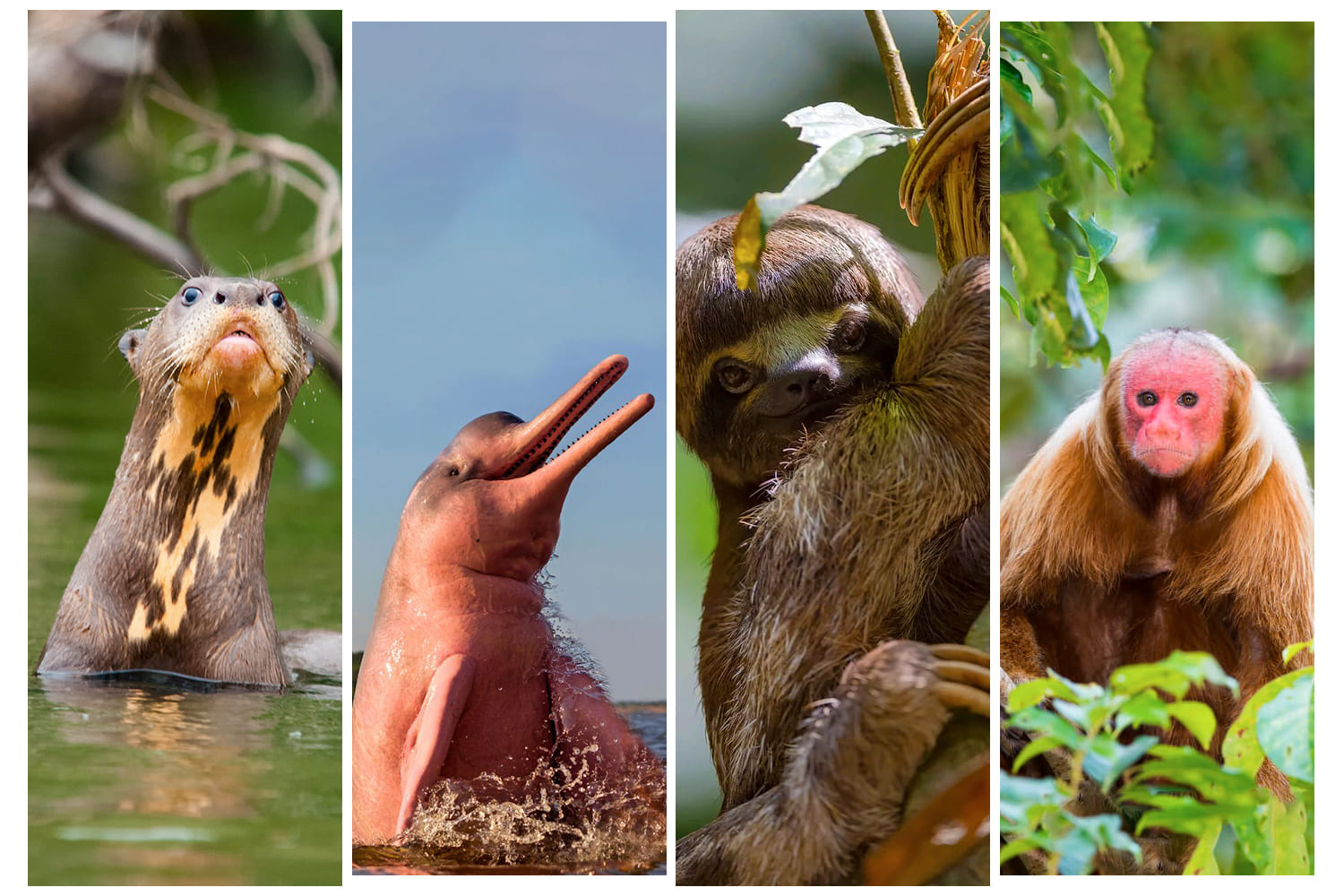
If you want to see large flocks of macaws and parrots, Manu is the place; also for bird and frog species, monkey watching and trails. All this cannot be seen in the Iquitos area. Manu National Park offers possibly the best nature experience, especially if you venture into the reserve; Here, you’ll get good views, including the Andes in the distance and incredible sunrises.
Iquitos is generally considered for pink river dolphins and offers more monkey species and a cultural experience. Only Iquitos allows you to enjoy the powerful Amazon River. The Madre de Dios and Tambopata rivers of Puerto Maldonado are tributaries of the Amazon and the Amazon basin, but not of the Amazon River itself. Therefore, Pacaya (Iquitos) is the best area to take photographs due to the existence of open areas, local people/tribes, reflective lakes, etc.; Pacaya Samiria is a huge mosaic of rivers and lakes.
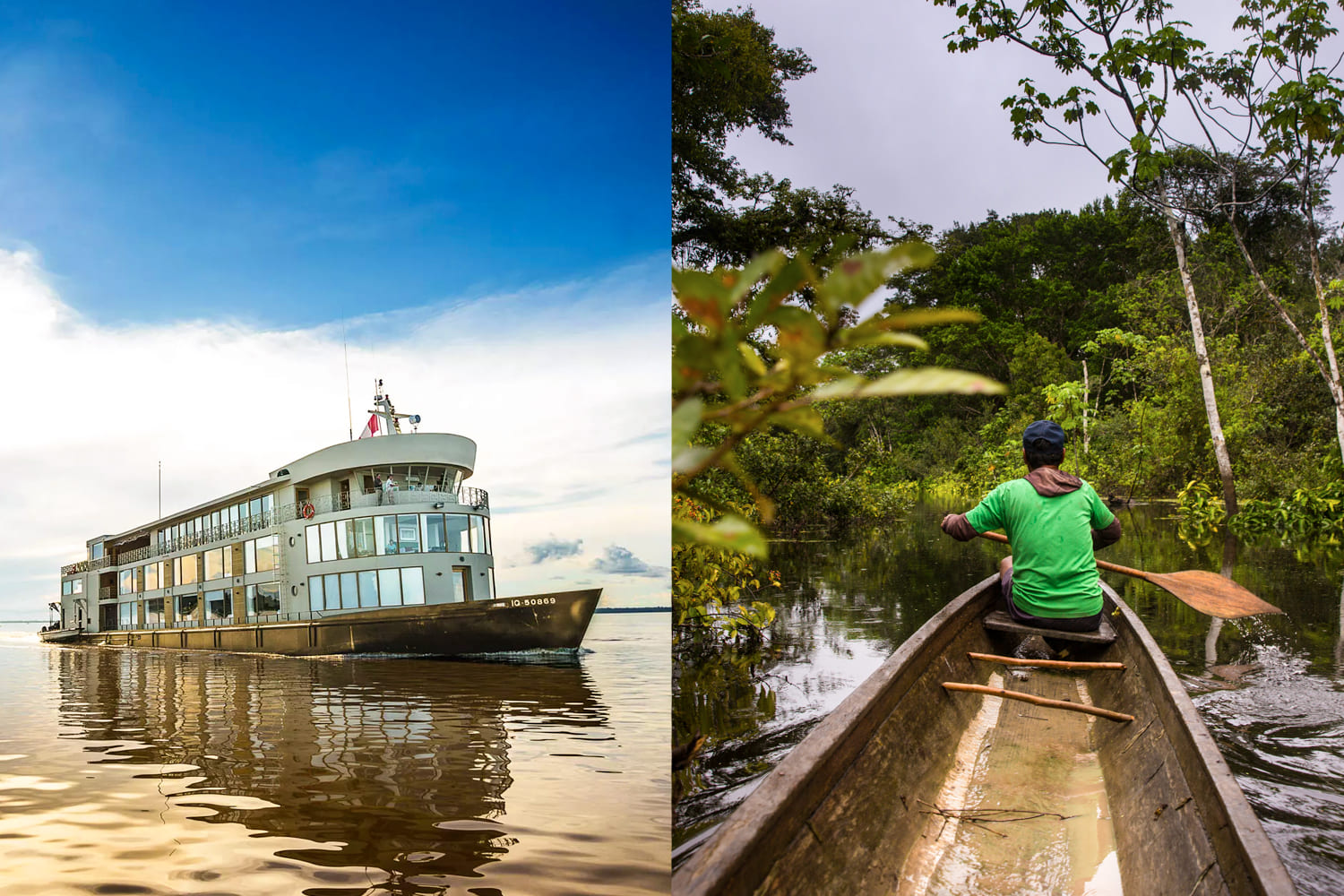
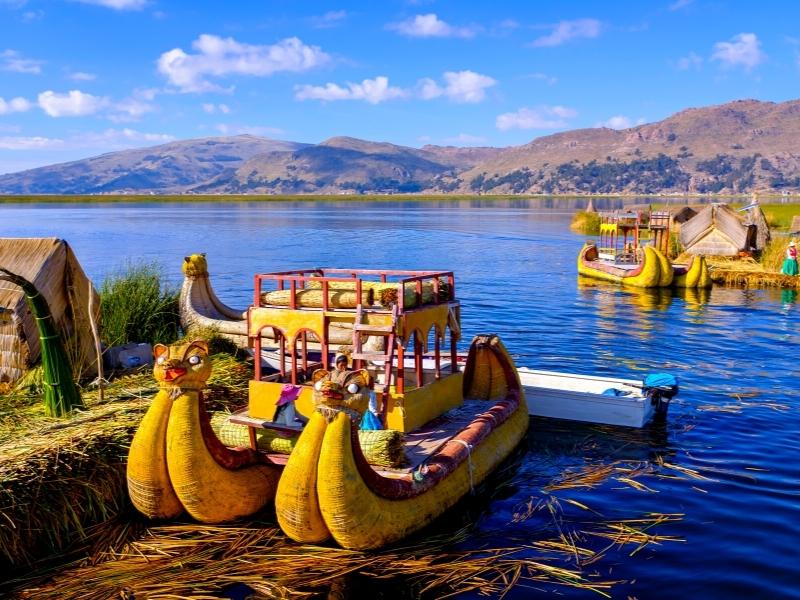
The wonders of Peru await you as you hike through the Manu Amazon rainforest, traverse the plains of the Sacred Valley of the Incas, and stroll the cobbled streets of Cusco on this 15-day trip from Lima. Search for monkeys and medicinal plants in the Amazon, travel the ancient road to Machu Picchu, experience a stay in a traditional community on the shores of serene Lake Titicaca.

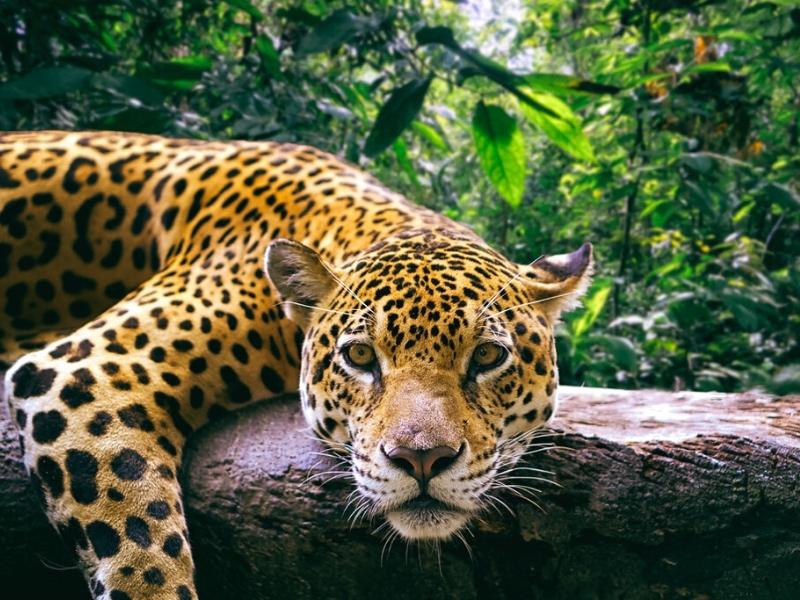
The Manu Jungle tour goes to one of the largest life biosphere reserves in the World. You will enjoy wildlife, traditional villages, with the best specialized guides.


Manu National Park is an excellent way to experience an intense amazon wildlife.Is the biggest Amazon rainforest in the Americas, its incomparable natural wealth, host the greatest amount of flora and fauna of the world.
